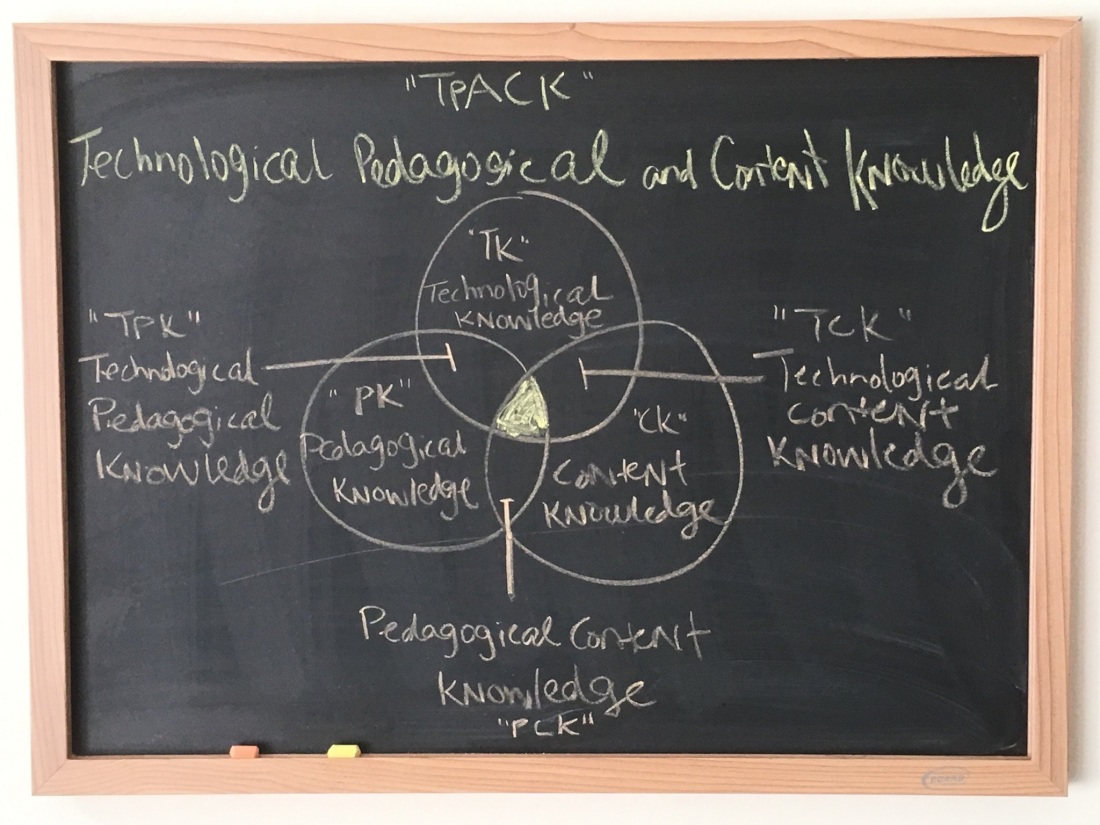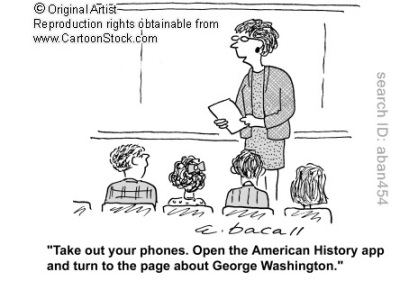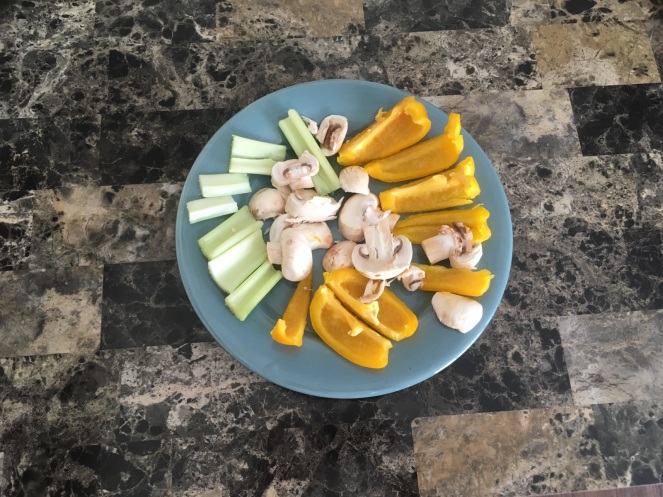I explored Punya Mishra and Matthew Koehler’s (2006) Technological Pedagogical and Content Knowledge (TPACK) framework (see Figure 1) through a quickfire learning activity in Week 6 of CEP 810.

Figure 1. Mishra & Koehler’s (2006) seven components of TPACK, depicted by Emily Gardner.
Koehler et al.’s (2006) framework embodies the critical elements of teacher knowledge that are continuously enhanced and blended throughout the teaching process.
My task to make a veggie platter in this week’s quickfire activity (see Video 1) is analogous to the challenges that many teachers face when using the TPACK framework in classroom settings. That is, teachers must constantly employ their expertise in technology, pedagogy, and content to educate students under imperfect, and oftentimes impractical circumstances.
Video 1. Emily Gardner (2018) making a veggie platter with randomly selected kitchen utensils.
As seen in Video 1, TPACK necessitates the repurposing of tools and resources available to teachers. Despite classroom constraints, “teachers with flexibility of thought, tolerance of ambiguity and willingness to experiment can combine traits that perfectly design and tailor their own education content, pedagogical, and technical environments” (Kereluik, Mishra, & Koehler, 2011, 17).
 Especially in 21st century classrooms, a teacher’s ability to repurpose educational tools will highlight her or his technological knowledge (TK). Although a range of educational technologies are easily accessible, none have the inherent capacity to automate learning (Mishra, 2012). Teachers may therefore tap into TPACK, skillfully utilizing technology to enhance their instruction and content delivery.
Especially in 21st century classrooms, a teacher’s ability to repurpose educational tools will highlight her or his technological knowledge (TK). Although a range of educational technologies are easily accessible, none have the inherent capacity to automate learning (Mishra, 2012). Teachers may therefore tap into TPACK, skillfully utilizing technology to enhance their instruction and content delivery.
TPACK was exhibited in Video 1 as I used the edges and handle of the potato masher to slice a yellow pepper, pieces of celery, and some mushrooms (see Figure 2).
Figure 2. TPACK quickfire activity (2018). “Technologies” included a large plate, small bowl, and potato masher; “Content” included a yellow pepper, celery sticks, and mushrooms;”Pedagogy”captured by quickfire activity performance.
My application of the masher did not rely on its traditional functions, yet I devised a creative and roundabout way to achieve my goal in the end (see Figure 3).

Figure 3. Veggie platter (2018) TPACK quickfire activity final product.
In the same way, teachers rely on TPACK to find new and relevant designations for educational technologies every day.
References
Kereluik, K., Mishra, P., & Koehler, M. (2011). On learning to subvert signs: Literacy, technology and the TPACK framework. The California Reader, 44 (2).
Mishra, P. (2012, March 26). 21st Century Learning Conference: Keynote speaker presentation [Video file]. Retrieved from https://youtu.be/9bwXYa91fvQ
Mishra, P., & Koehler, M. J. (2006). Technological pedagogical content knowledge: A framework for teacher knowledge. Teachers College Record, 108(6), 1017-1054. Retrieved from http://punya.educ.msu.edu/publications/journal_articles/mishra-koehler-tcr2006.pdf


Emily,
I was really amazed at your skills of cutting veggies with a potato masher! I think you did a great job of explaining what was working and not working while using the tool. I really liked how you pointed out which were the best parts of the potato masher to work with and why that was. It helped me follow along with what you were doing and why you were cutting the vegetables in the manner you were. I also loved the pictures that you posted in your blog. The veggie face picture made me laugh and kept me interested in how your tool would work to cut them! I also liked how well you tied the challenge of using a tool in a different manner to how we as teachers must do that everyday with the technology we are, or are not, given. It made me think more deeply into my school and made me ask myself, ‘how can I use different tools and technologies in the classroom but let my students figure it out?’ Too often I find myself doing more work than them, and I think this activity really helped me see outside the box and is helping me find ways to get them to think outside the box. Watching you use a potato masher to slice veggies was awesome and it looked as though it turned out great!
LikeLike